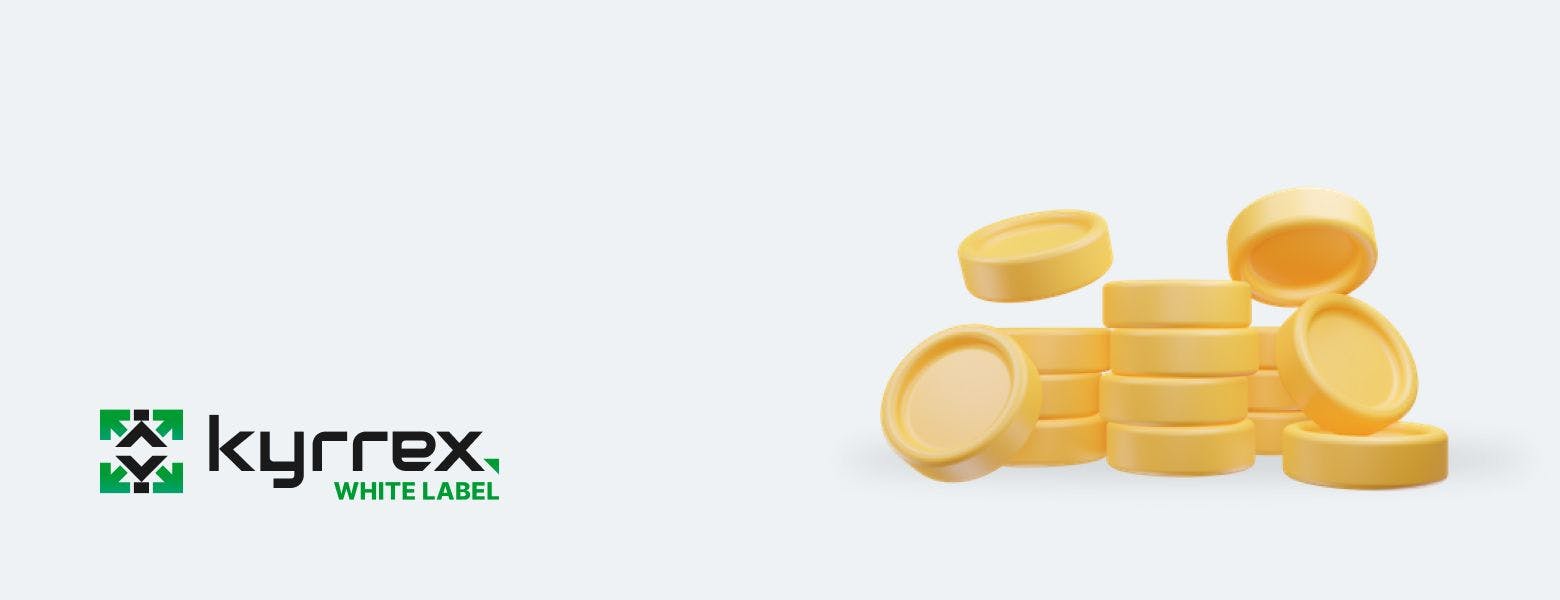
Maximizing Profits: Innovative Ways of Monetizing Your Crypto Exchange

Finding innovative ways to monetize your platform is crucial for the long-term success of a cryptocurrency exchange. In this article, we will explore diverse monetization strategies that can help you maximize profits and stay ahead of the competition.
Standard Revenue-Generation Strategies
These are popular methods of revenue generation for crypto exchanges. Most centralized exchanges, in their various forms, deploy some or all of the methods here to make money and keep the platform running.
1. Trading Fees and Commissions
One of the most common ways to monetize a crypto exchange is through trading fees and commissions. According to Nasdaq, trading fees on most cryptocurrency exchanges range between 0% and 1.5% per trade. By charging a small percentage of each transaction, you can generate a steady stream of revenue. However, it’s important to strike a balance between competitive fees and sustainable profitability. Conducting market research to understand the fee structures of your competitors can help you determine the optimal pricing strategy for your exchange.
2. Premium Features and Subscriptions
Offering premium features and subscription plans can be an effective way to monetize your crypto exchange. By providing additional benefits such as advanced trading tools, real-time market data, or priority customer support, you can attract users who are willing to pay for enhanced services. Conducting user surveys and analyzing customer feedback can help you identify the most valuable features to include in your premium plans.
3. Token Listing Fees
As the crypto market continues to expand, listing fees for new tokens have become a significant source of revenue for exchanges. By charging a fee for listing tokens on your platform, you can generate income from projects seeking exposure to your user base. However, it’s important to conduct thorough due diligence on each token to maintain the integrity of your exchange and protect your users from potential scams.
4. Affiliate and Referral Programs
Implementing affiliate and referral programs can be a win-win strategy for both your exchange and your users. By incentivizing users to refer new customers to your platform, you can expand your user base while rewarding your existing users. Offering referral bonuses, discounts on trading fees, or even revenue sharing can motivate users to actively promote your exchange. Tracking and analyzing referral data can help you optimize your program and maximize its effectiveness.
5. Margin Trading and Lending
Introducing margin trading and lending services can open up new revenue streams for your crypto exchange. According to data from CoinMarketCap, the top 5 crypto derivatives exchanges alone process more than $50 billion in daily volume, highlighting its status as a money spinner. By allowing users to trade with borrowed funds or lend their assets to others, you can earn interest or fees on these transactions. However, it’s important to implement robust risk management measures and educate your users about the potential risks associated with margin trading and lending.
6. Initial Exchange Offerings (IEOs)
IEOs have gained popularity as a fundraising method for blockchain projects. By hosting IEOs on your exchange, you can charge listing fees and earn a percentage of the tokens sold during the fundraising event. However, it’s crucial to conduct thorough due diligence on the projects and ensure compliance with regulatory requirements to protect your users and maintain the reputation of your exchange.
7. NFT Marketplaces
The rise of non-fungible tokens (NFTs) has opened up new opportunities for crypto exchanges to monetize their platforms. By creating an NFT marketplace or partnering with existing ones, you can facilitate the buying, selling, and trading of digital collectibles, artwork, and other unique assets. Charging transaction fees or taking a percentage of each NFT sale can generate revenue while tapping into the growing interest in this emerging market.
Secondary Methods of Revenue Generation for Crypto Exchange Platforms

This is where innovation and a coherent business strategy play a key role. The precise methods chosen to augment revenue for your crypto exchange will vary depending on the type of exchange, its target audience, market sentiment, regulatory environment and other factors.
1. Strategic Partnerships and Sponsorships
Collaborating with other companies in the crypto industry through strategic partnerships and sponsorships can provide additional revenue opportunities. By partnering with established projects or sponsoring industry events, you can increase brand visibility and attract new users to your exchange. It’s important to choose partnerships that align with your brand values and target audience to ensure a mutually beneficial relationship.
2. Using a Turnkey Solution
Using a turnkey or white label solution instead of building a crypto platform from scratch can be a strategic move that helps you maximize revenue. By leveraging a pre-built solution like Kyrrex White Label, platforms can save valuable time and resources that would otherwise be spent on development, testing, and maintenance. This allows you to focus on your core competencies, such as marketing, customer acquisition, and enhancing the user experience. Additionally, a turnkey solution provides access to a proven infrastructure, advanced trading features, and security measures that have been refined over time. This not only accelerates the platform’s time to market but also instills confidence in users, attracting a larger user base and increasing trading volume. By deploying a turnkey solution like Kyrrex White Label, you can minimize upfront costs and streamline operations, thereby allocating more resources towards monetization strategies, such as trading fees, premium features, and partnerships, ultimately maximizing your revenue potential.
3. Educational Resources and Courses
Positioning your crypto exchange as a trusted source of knowledge and education can be a valuable monetization strategy. By offering educational resources, tutorials, and online courses on topics such as blockchain technology, cryptocurrency trading strategies, or security best practices, you can attract users who are willing to pay for premium educational content. This not only generates revenue but also enhances your brand reputation as an authority in the industry.
4. Sponsored Content and Advertising
Partnering with relevant brands and projects to display sponsored content or advertisements on your exchange platform can be a lucrative monetization strategy. By carefully selecting partners that align with your target audience and maintaining transparency about sponsored content, you can generate revenue while providing value to your users. However, it’s important to strike a balance between monetization and user experience to avoid overwhelming your users with excessive advertising.
5. Data Analytics and Insights
Leveraging the data generated by your crypto exchange can provide valuable insights that can be monetized. By analyzing trading patterns, market trends, and user behavior, you can offer data analytics services or sell aggregated data to researchers, institutional investors, or other market participants. Ensuring data privacy and compliance with regulations is crucial when exploring this monetization avenue.
6. Community Building and Events
Building a strong community around your crypto exchange can create opportunities for monetization. By organizing virtual or physical events, meetups, or conferences, you can bring together industry experts, thought leaders, and enthusiasts. Charging ticket fees, securing sponsorships, or offering premium access to exclusive networking opportunities can generate revenue while fostering a sense of belonging and loyalty among your community members.
7. Cross-Promotion and Partnerships
Collaborating with other crypto projects or exchanges through cross-promotion and partnerships can be mutually beneficial. By featuring each other’s platforms, sharing user bases, or offering joint promotions, you can expand your reach and attract new users. This can be monetized through revenue-sharing agreements or by leveraging the increased user base to drive more trading activity on your exchange.
Final Words
Being able to successfully monetize your crypto platform is essential for long-term success. By implementing a combination of trading fees, premium features, token listing fees, affiliate programs, margin trading, IEOs, strategic partnerships and secondary avenues of generating revenue, you can maximize profits and ensure the financial stability of your crypto exchange. However, it’s important to continuously monitor market trends, analyze user feedback, and adapt your monetization strategies to stay ahead of the competition. Remember, the key to success lies in understanding your target audience, providing value-added services, and maintaining a strong brand image in the crypto community.

























